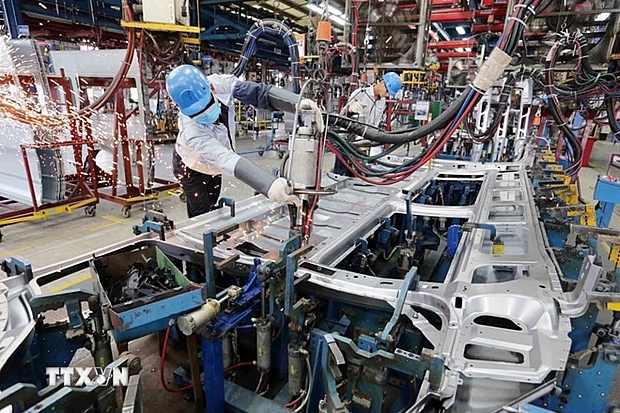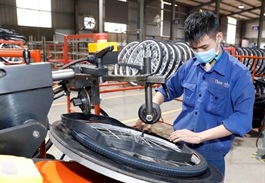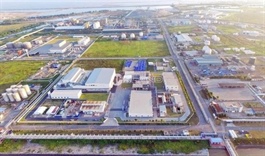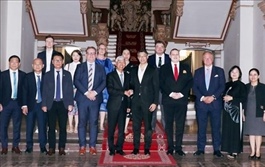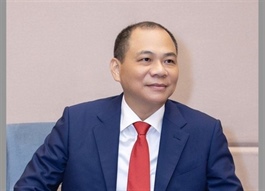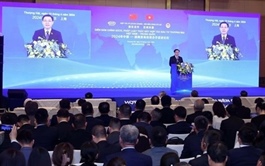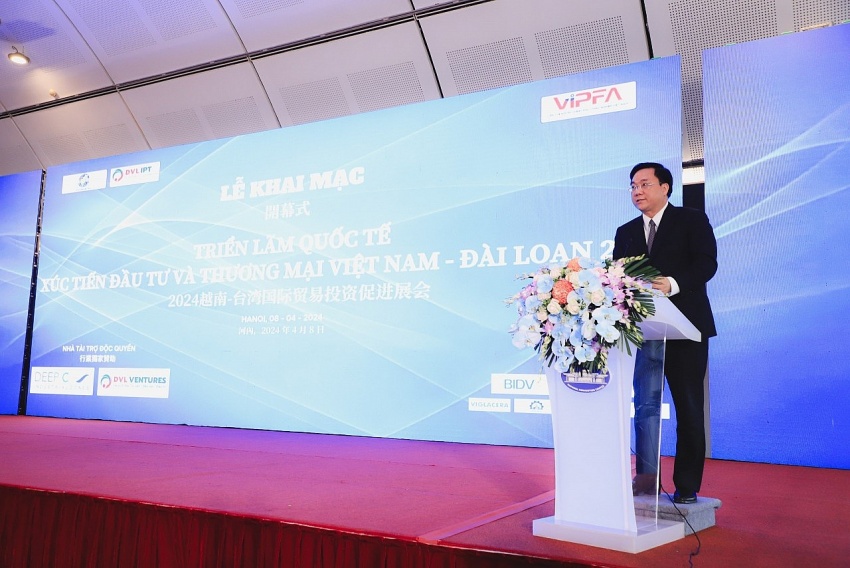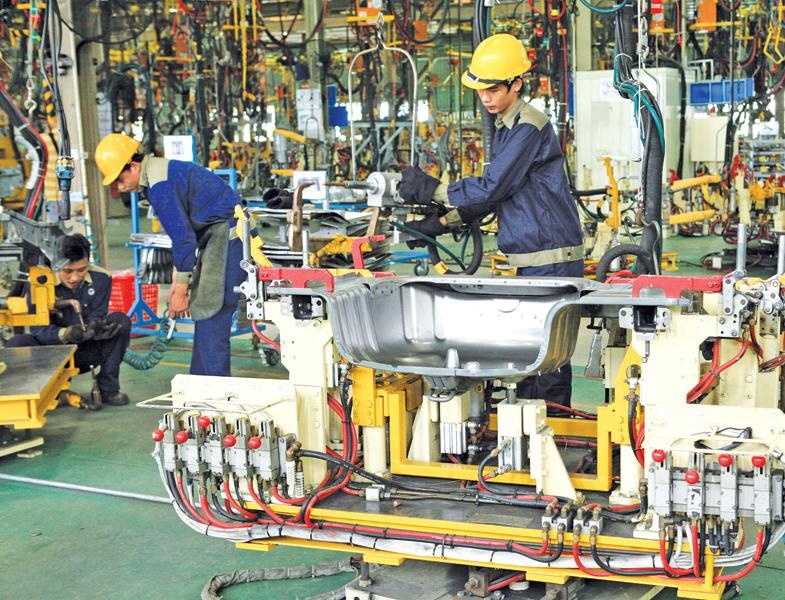Vietnam, China to step up cooperation strategy for mutual development
Vietnam, China to step up cooperation strategy for mutual development
Both sides are expected to build a bridge over the Red River in the border area of Bat Xat, Lao Cai (Vietnam), and Ba Sai, Yunnan (China), among other initiatives.
Vietnam and China are expected to speed up the realization of a cooperation strategy for mutual development, especially the documents signed during the recent visit of State President Xi Jinping to Vietnam.
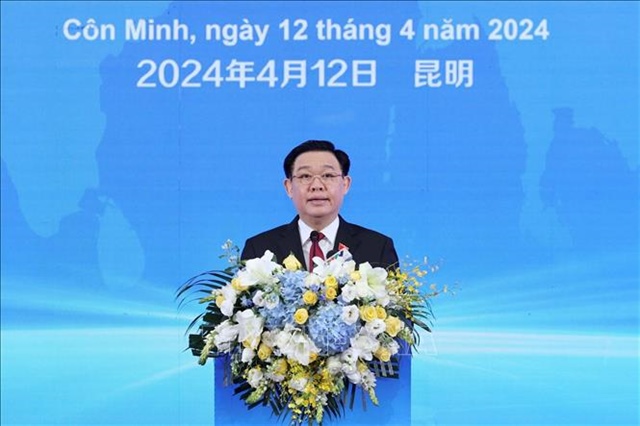
Chairman of the National Assembly Vuong Dinh Hue at the forum. Source: VNA |
The focuses include the cooperation plans connecting Vietnam’s "Two Corridors, One Belt" framework with the "Belt and Road" initiative, as well as agreements and protocols for the construction of a bridge over the Red River in the border area of Bat Xat, Lao Cai (Vietnam) and Ba Sai, Yunnan (China); the Action Plan for 2023–2026 to implement the Memorandum of Understanding between the Vietnamese Ministry of Industry and Trade and the Yunnan Provincial Government (China) on strengthening economic and trade cooperation, and memoranda on enhancing cooperation in railway development and cross-border rail development assistance.
Both parties are expected to quickly finalize plans to connect the railway line between Lao Cai station (Vietnam) and Hekou North station (Yunnan, China).
These are the requests made by Chairman of the National Assembly Vuong Dinh Hue at the Vietnam-China policy and law forum to promote investment and trade cooperation on April 12 at Kunming, Yunnan, which was attended by 450 business representatives from the two countries. This is the second forum organized to promote trade and investment cooperation between the two countries during the official visit to China by the National Assembly Chairman.
According to Hue, these key projects play a crucial role in boosting trade between the two sides, facilitating cooperation between the residents of Lao Cai and Yunnan provinces, and fostering broader trade and investment collaboration between Vietnam and China.
Given the ease of transportation and the numerous border crossings and checkpoints between the two sides, he emphasized the significant potential for mutual trade and collaboration. He highlighted that the top leadership in Vietnam supports and facilitates beneficial cooperation between Vietnamese and Chinese localities, including Yunnan province.
In particular, Yunnan enterprises have an advantage when investing in certain sectors in Vietnam, such as manufacturing, high-tech agriculture, biotechnology, green economy, digital economy, circular economy, knowledge economy, infrastructure development, high-speed railways, and urban rail systems.
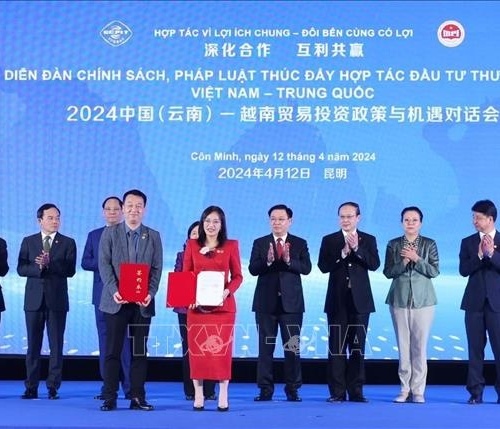
Leaders from both sides witness the signing of cooperation agreements among businesses. |
To make the most of existing mechanisms, Hue recommended that relevant authorities closely follow the actual needs of citizens on both sides and create a favorable economic environment for regional import-export activities and business investment to reach international markets.
He stated that the Vietnamese National Assembly has consistently supported the entire political system in enacting policies to build a transparent, fair, and comprehensive legal framework, making it easier for foreign investors in general and Chinese businesses in particular to operate successfully in Vietnam.
“In this way, both sides can realize the new achievements and connotations of the comprehensive strategic partnership between Vietnam and China, strengthening and deepening the relationship between the two parties and countries for long-term stability and sustainability,” Hue said.
Speaking at the opening of the forum, Yunnan Vice Governor Liu Yong expressed confidence that the forum would enhance trust and open up new opportunities for economic, trade, and investment cooperation between the two sides.
During the forum, Chairman Hue and the representatives from both countries witnessed the signing of memorandums of understanding and cooperation agreements in various fields, such as aviation, supply chain finance, robot design and manufacturing, AI application in coffee production and trade in China and Vietnam, and fresh flower trade and exchanges.



